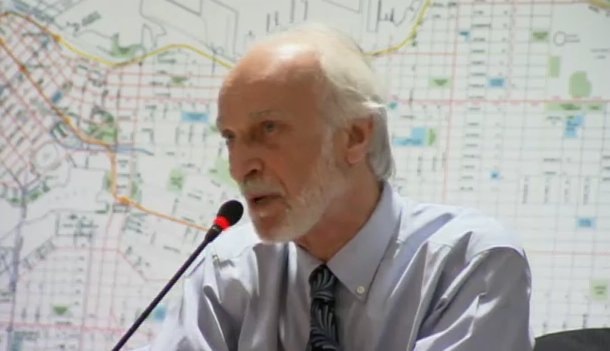Police harassment was one of many factors that made Vancouver street-level prostitutes easier prey for serial killer Robert Pickton, B.C.'s Missing Women Inquiry heard today.
SFU criminologist John Lowman, an expert on prostitution, testified police used a variety of tactics in the 1990s – from confiscating condoms to taking sex-trade workers on one-way "starlight tours" to distant areas – to get them out of residential areas where they irked neighbours.
Prostitutes were pushed into a low-visibility industrial tract north of Hastings Street, where they ended up more vulnerable to predators, he said.
Once the residential nuisance problem was solved, Lowman said, police were less likely to pay attention to the issues of sex-trade workers, many of whom reported hostility or indifference from officers.
One of the women Pickton murdered – Sarah de Vries – wrote in her journal that police told her she "deserved" what she got after a client drove her to a wooded area near Port Moody and nearly killed her.
Lowman said police on the North Shore didn't receive bad date sheets with licence plate numbers of violent johns that were regularly sent out by Downtown Eastside groups because North Vancouver RCMP wouldn't cover the postage costs to mail them over to their detachment.
The lower-rung prostitutes ultimately targeted by Pickton were already more vulnerable.
Lowman said they couldn't afford a $20 hotel room to turn a trick in relative safety – as some other street workers in a "high track" stroll could – so they tended to make riskier decisions about who they would serve and where they'd go, especially when desperate for drugs.
A woman might end up at Trout Lake in Burnaby, he said, or the Pickton farm in Port Coquitlam.
"She is alone with somebody who might be a predator," Lowman said. "She is at much, much greater risk."
He characterized the most vulnerable as "survival sex" workers who must feed an addiction. Some start as young as age 12 and may come from impoverished aboriginal families, damaged by family violence, abuse and fetal alcohol syndrome.
"The women who are the most disadvantaged are the most abused," Lowman said.
Youths not yet eligible for welfare can end up on the street, addicted and turning to prostitution. Sometimes, he said, addicted boyfriends make them sell their bodies for drug money.
Canada's laws that criminalize communication for the purposes of prostitution mean a woman attacked by her customer must effectively confess to a crime to lodge a report with police, he added.
In contrast, Lowman said, the 80 to 95 per cent of prostitution that happens off the street – in massage parlours, corner stores or arranged through escort agencies or over the Internet – is effectively legal and virtually unobstructed by police.
"It's a two-tier system of prostitution law enforcement in Canada," he said. "Fundamental changes need to be made at every level."
In criminal injury cases, Lowman noted, women injured through prostitution have been denied compensation on the grounds the work they do is inherently dangerous.
"Imagine telling that to a firefighter."
Lowman was the first witness to testify at the inquiry into how police agencies failed to catch Pickton much sooner.
Demonstrators conducted a vigil for Pickton's victims outside the inquiry Wednesday, blocking traffic at Granville and West Georgia for a third straight day.



